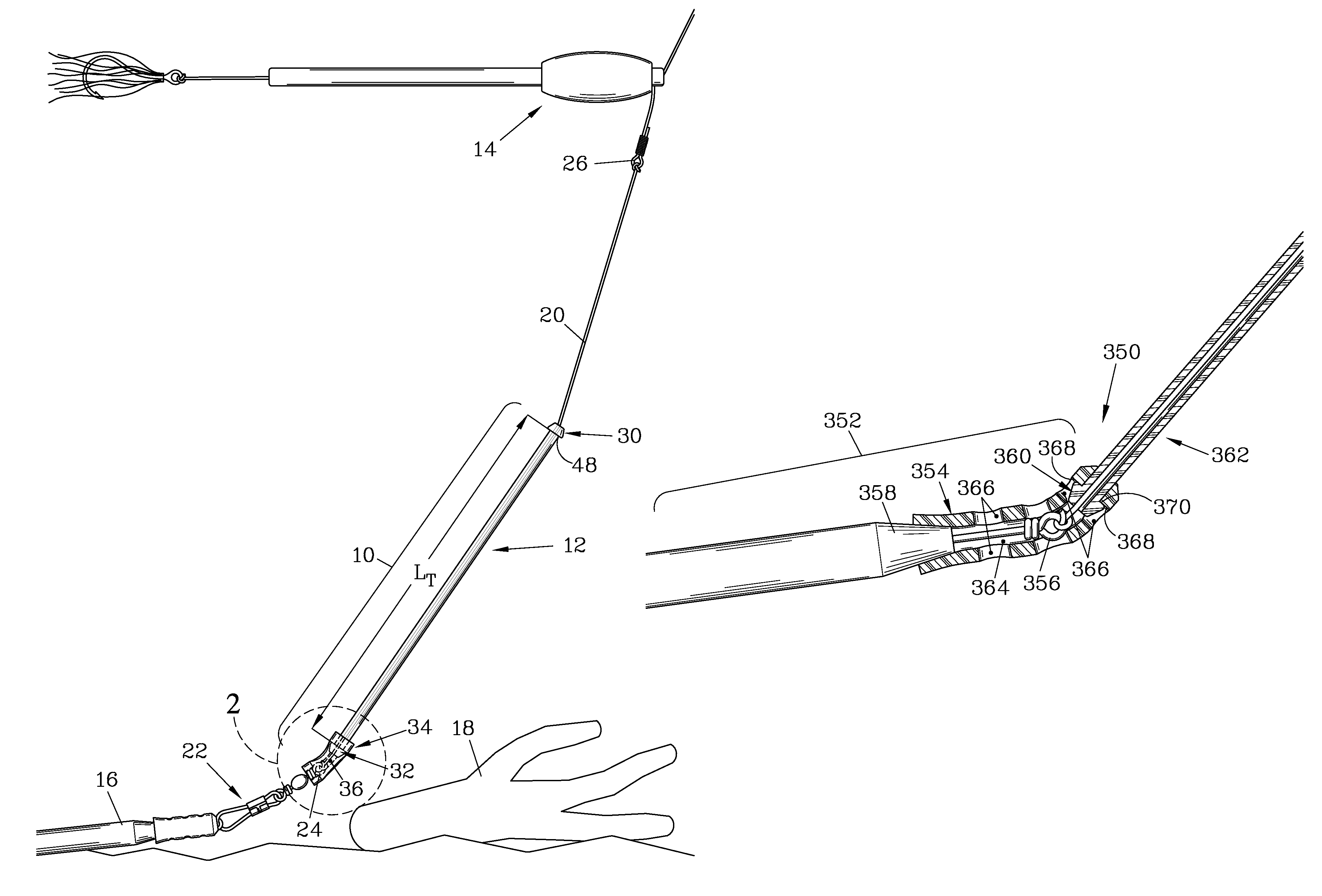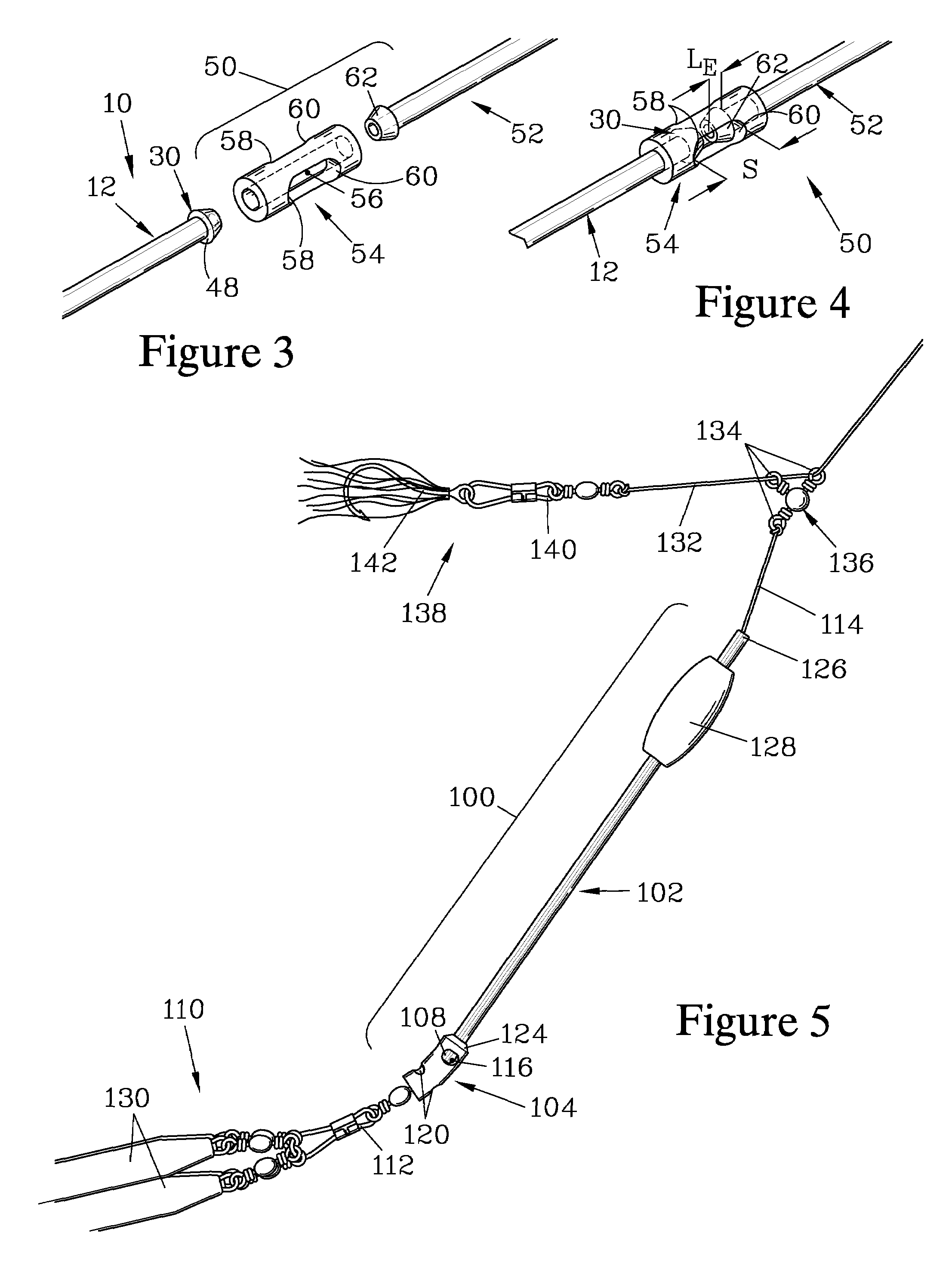Snag-resistant sinker line shield
a sinker line and shield technology, applied in fishing, other angling devices, animal husbandry, etc., can solve the problems of sinker line chafing, broken fishing line, and loss of the tackle elements attached thereto, and achieve the effect of preventing chafing of the sinker lin
- Summary
- Abstract
- Description
- Claims
- Application Information
AI Technical Summary
Benefits of technology
Problems solved by technology
Method used
Image
Examples
Embodiment Construction
[0029]The present invention provides a line shield for a sinker line that attaches to a sinker, the line shield helping to prevent snagging of the sinker on underwater obstructions. FIGS. 1-2 illustrate one embodiment of the present invention, a line shield 10 having a resilient tube 12. FIG. 1 shows the line shield 10 when employed with a bait locating device 14, such as that taught in U.S. Pat. No. 5,555,668, incorporated herein by reference, and a sinker 16. The sinker 16 illustrated in FIG. 1 is a linkable sinker discussed in copending application Ser. No. 11 / 828,417 of the present inventor entitled “Snag-Resistant Linkable Sinker”. The line shield 10 acts as a deflector to guide the sinker 16 and any associated connector elements over obstructions such as rocks, weeds, or branches, such as a branch 18 also shown in FIG. 1. The sinker 16 is shown attached to a sinker line 20 by a snap swivel 22 having a swivel eye 24 to which the sinker line 20 is tied. The sinker line 20 in tur...
PUM
 Login to View More
Login to View More Abstract
Description
Claims
Application Information
 Login to View More
Login to View More - R&D
- Intellectual Property
- Life Sciences
- Materials
- Tech Scout
- Unparalleled Data Quality
- Higher Quality Content
- 60% Fewer Hallucinations
Browse by: Latest US Patents, China's latest patents, Technical Efficacy Thesaurus, Application Domain, Technology Topic, Popular Technical Reports.
© 2025 PatSnap. All rights reserved.Legal|Privacy policy|Modern Slavery Act Transparency Statement|Sitemap|About US| Contact US: help@patsnap.com



